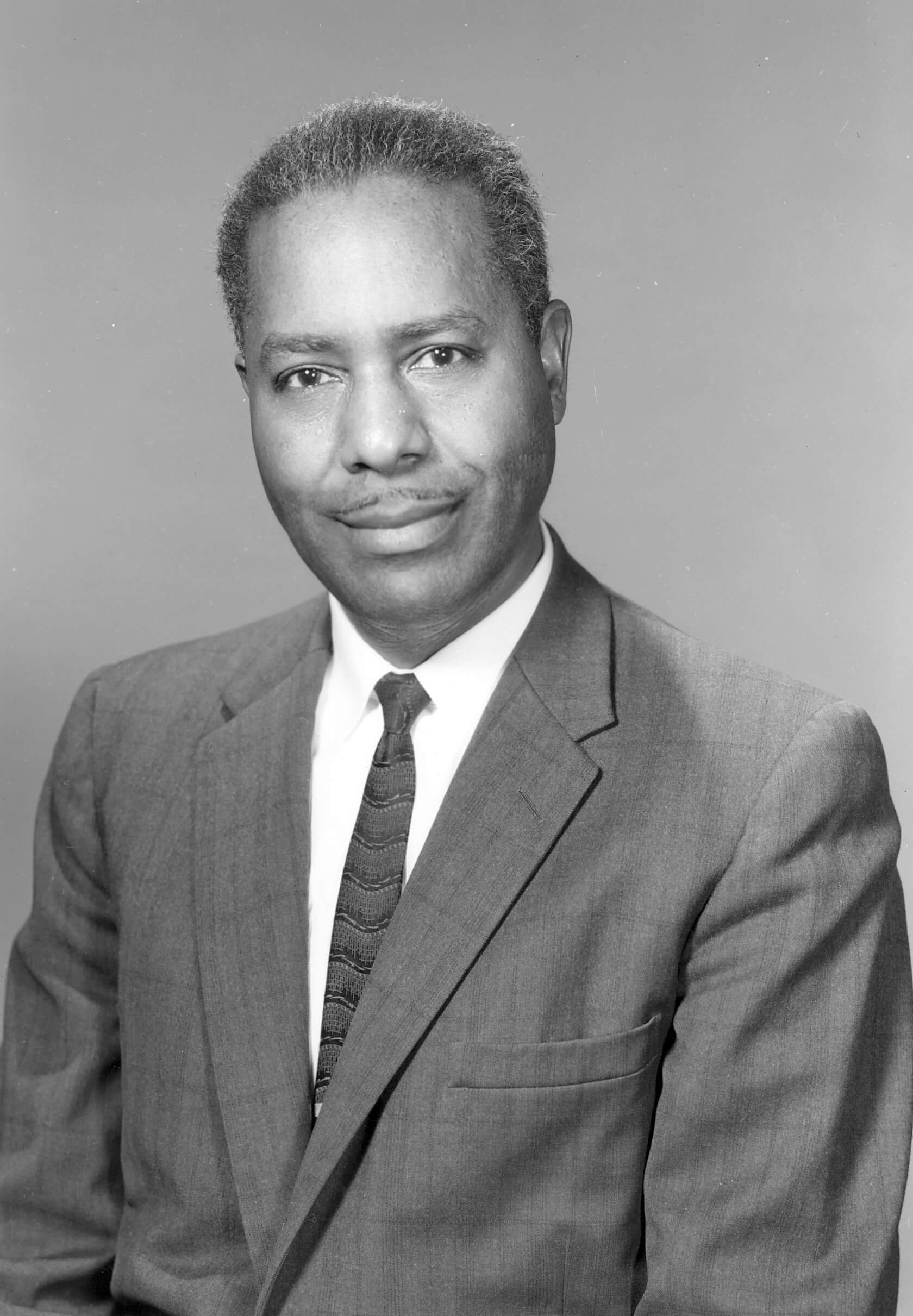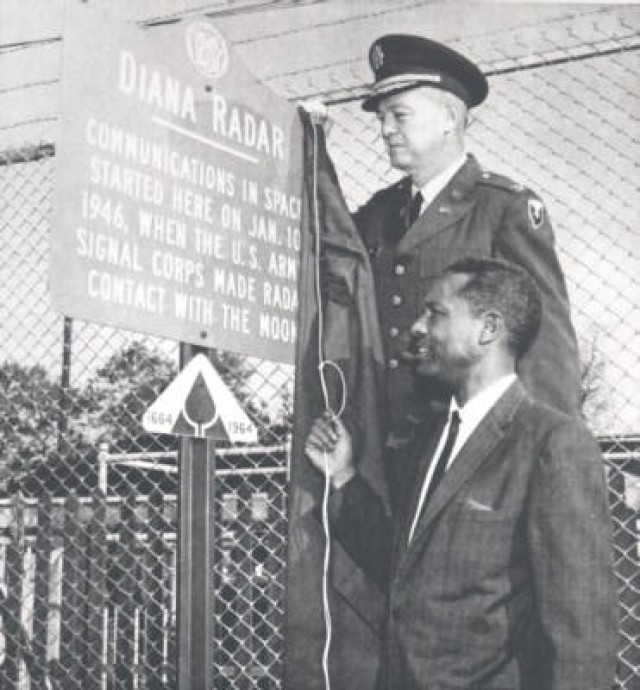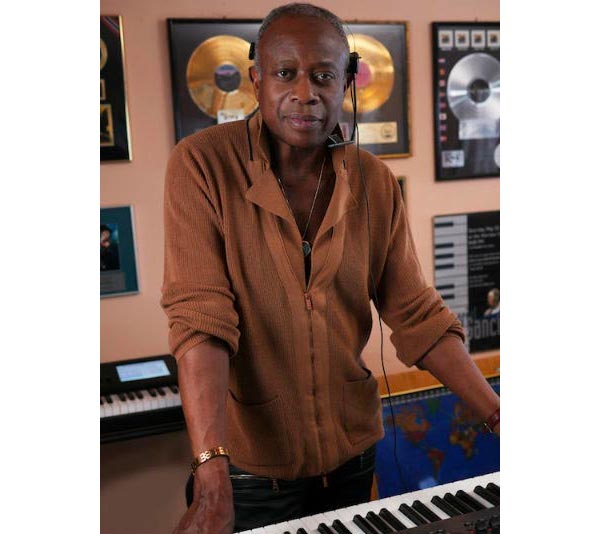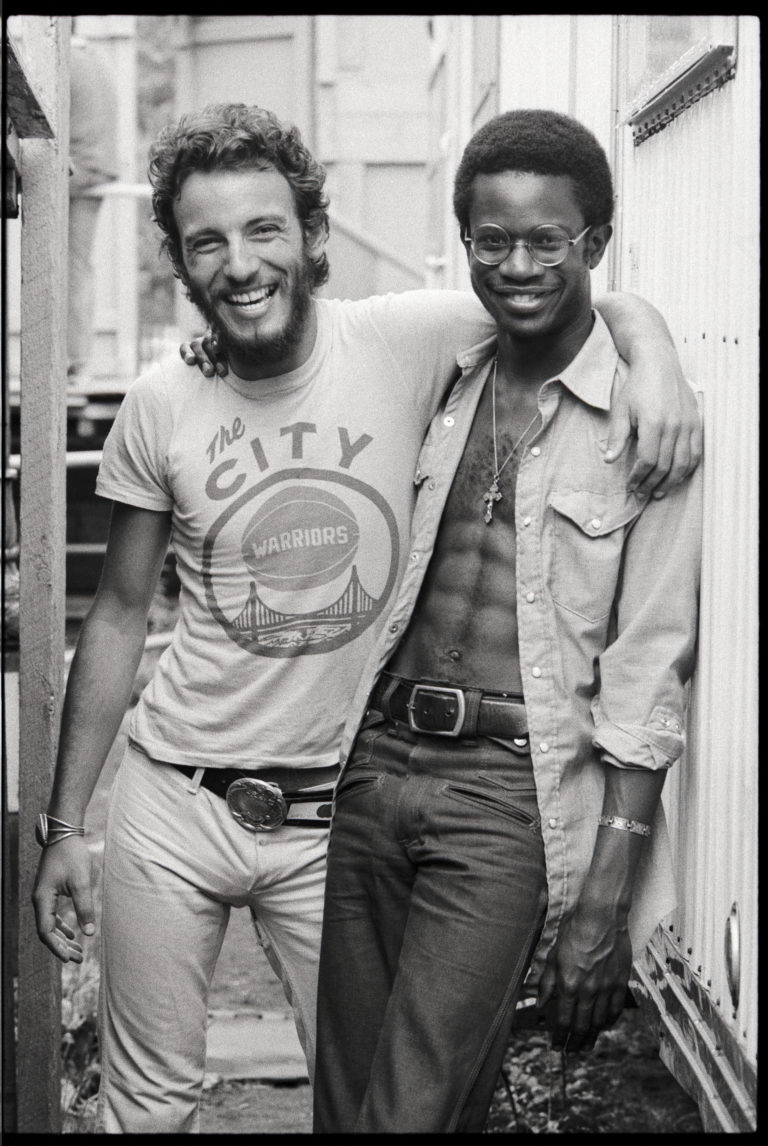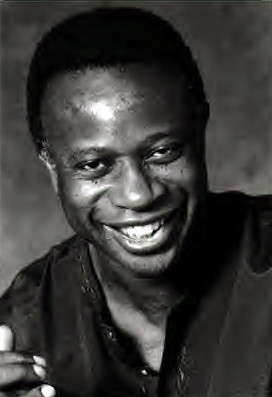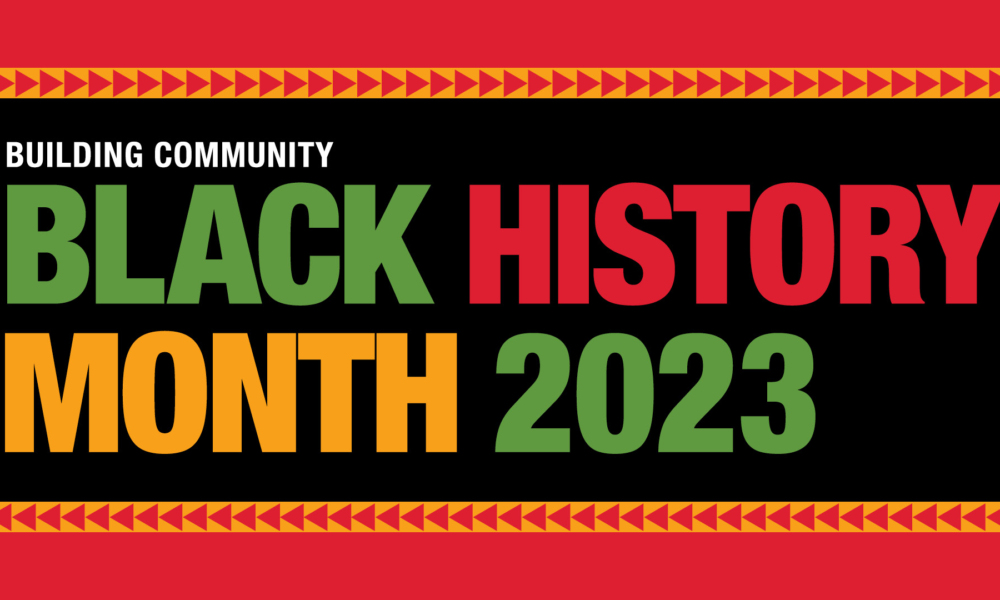
Belmar Public Library celebrates Black History Month 2023 by shining the spotlight on Belmar African Americans who have contributed to our local and national culture and society in history.
Every week we will focus on one Belmar resident in time who has made an impact on our local and national history and add their story to this page.
Week 3 – Walter S. McAfee
The story of Walter S. McAfee is one of determination, discipline and perseverance. It begins, like so many others, with his parents, Suzie and Luther McAfee in Ore, Texas. Both were well educated, with Luther educated at Texas College, then run by the Colored Methodist Episcopal Church and becoming a carpenter.
Walter’s mother, Suzie had studied at Wiley College in Marshall, Texas, and had qualified as an elementary teacher but she never had a teaching position in a school. In 1912 Suzie took the examination for Texas teacher’s certification. She passed every part, but her spelling paper was mysteriously lost. Her father was told that if he paid $50 (2 months salary then), the paper could be found. Outraged, he refused to pay and Susie could not be a teacher.
Although she never held a teaching position, Susie taught all nine of her children successfully, with all nine ultimately acquiring college degrees, 7 in mathematics and 2 in chemistry. Early 20th Century racism may have cheated her out of a career, but her skills as a teacher to her nine successful children ultimately gave her the last laugh over that racism, giving our nation 9 successful mathematicians and scientists, teaching them a love for learning and how to be serious in their academic pursuits. One can imagine how many more young minds she could have taught and influenced if given the chance.
Walter’s interest in math and physics began in High School in Marshall, TX. He had an influential teacher in chemistry and physics, Freeman Prince Hodge, who recognized Walter’s intellect and passion for learning, often referring to Walter as his “Intellectual giant.”
He went on to graduate Magna Cum Laude from Wiley College with BS in Mathematics 1934. The Depression was on since 1929 and jobs were hard to find, so to earn money Walter took on several temporary jobs such as farm work, carpenter’s assistant and door-to-door salesman. In 1935 he decided to continue his education and applied to Ohio State University in Columbus, Ohio. Due to his academic record he was accepted instantly.
He asked to major in theoretical mathematical physics, was placed immediately and worked under the supervision of Llewellyn H. Thomas, graduating with his Masters Degree in 1937. He was one of the very few African Americans earning advanced degrees at the time. He wanted to continue his studies to earn a Doctorate degree, but decided the best way to earn money while doing so was to be a teacher, so he got a teaching job at a high school in Columbus, Ohio teaching General Science, Mathematics and 9th Grade Biology for 5 years between 1937 and 1942.
It was during this time that he met his future wife, Viola Winston, a French teacher at the same school. They married in 1941. Walter was a hard worker and during the summer months he took advanced classes at the university. He wanted to contribute to the war effort and started to apply for positions. At the time he was rejected often, mostly because at this time applications asked for a photograph to be included, and his black heritage held him back. Finally he applied to join the Electronics Research Command section of the U.S. Army Signal Corps at Fort Monmouth, NJ and this time no photograph was required. He was hired right away.
By the time Walter S. McAfee and his wife, Viola moved to South Belmar, NJ in 1942, Walter was already a recognized scientist.
Hired by the US Army Signals Corps to work at the Electronics research Command at Fort Monmouth’s Camp Evans, he started to work right away on Project Diana, the project to attempt to bounce radar signals off the moon.
The team of scientists on the Project certainly knew that their task was hard since two previous attempts had failed. McAfee was well qualified to be on this team for he had published papers on radar-echoing areas, radar cross sections and refraction studies in the atmosphere. McAfee did the necessary mathematical calculations to ensure that Project Diana would succeed, and on January 10, 1946, a successful attempt to bounce a radio signal off the Moon and back to Earth happened.
This was immensely important as this ability to transmit signals to the Moon and back paved the way for the development of the technology that enabled the US to win the Cold War and dominate the Space Race.
The success of the event was hailed in to the press, however official reports of the Project failed to include McAfee’s name, as well as other African -Americans on the project. It wasn’t until months later, after he had moved on to his doctoral studies did he get and press recognition for his work.
Nonetheless, after the success of Project Diana, McAfee was awarded one of three Rosenfeld Fellowships to continue his Doctoral studies at Cornell University in May 1946. His PhD was in Physics and he completed the work in 1948, returned to become Head of the Theoretical Unit of the Nucleonics Section at the U.S. Army Signal Corps at Fort Monmouth and was granted his Doctorate by Cornell University in 1949.
He continued to work at Fort Monmouth’s Camp Evans for the rest of his career until his retirement in 1985, all the time living with his wife and two daughters in his home in South Belmar, NJ. He continued to rack up accomplishments and accolades:
In 1953 he became the Head of the Electromagnetic Wave Propagation Section at Ft. Monmouth, and in 1956 he was the first recipient of the Secretary of the Army Research and Study Fellowship. It was to study radio astronomy and solar physics and was presented to McAfee by President Eisenhower. As part of this Fellowship he conducted these studies at Harvard for a year.
During this time McAfee did not forget his love for teaching, and would teach atomic and nuclear physics and solid state electronics classes in the evenings at Monmouth University (then Monmouth College). For him it was important to ensure that the younger generations of scientists and engineers be aware of all the opportunities in front of them, and to instill in them a love and respect for the subjects they studied.
Walter S. McAfee left a legacy larger than the technology he pioneered. His life story is an inspiration to the coming generations of all Americans, an example of what hard work, discipline and perseverance can do to overcome the obstacles that life and society can throw at you.
He was a well recognized American scientist whose contributions to communication technology are widely recognized as the beginning of the “Space Age” and were a precursor to space exploration, satellite communications and missile guidance systems. It was for his life’s work that the Belmar, NJ Post Office was named in his honor in 2019.
Week 2 – Neal Sterling
Our next Honoree is Neal Sterling.
Neal Sterling was a determined young man. That is how his father, Mike, described his son. From a young age Neal displayed an ability to know what he wanted and the determination to achieve his goals. Early in his childhood Neal wanted to join pop-Warner football in Belmar, but was 10 lbs. overweight, and he had a month to lose that weight. Over the course of that month Neal watched his diet, stayed away from sugars and soda, drank water and kept active, and at the young age of 10 years old Neal successfully lost the weight and qualified to play.
His mother Tina, was also born and raised in Belmar on 15th Ave, also attending Belmar Elementary School and Manasquan HS, so Neal’s roots in Belmar are deep. Mike and Tina raised their three children, Nicole, Nyle and Neal to be leaders not followers, be respectful of others but also to not take everything at face value. Born in 1992 and growing up in Belmar, Neal lived a happy and active life, exploring the area on foot and on his bike, fishing in Lake Como, going to the beach and spending time at Zelbe’s Famous Sandwich Shop playing video games while waiting for their food order. But sports was his passion and interest. At Belmar Elementary School, he played basketball, and joined the local Pop Warner football league at age 10.
He also played the trumpet in the Belmar Elementary School Music Band, excelling there well enough to play solo during recitals and concerts. According to his music teacher, Tom Brennan, Neal was very serious about his studies. He had a great pride in his work, marching with the school band in the Annual St. Patrick’s Day Parade multiple times, and performing in the school play, The Music Man in the 6th Grade.
During his years at Manasquan High School, Neal was a multi-sport athlete playing basketball and football both and excelling in both sports. According to his coach Pete Cahill, Neal was easily coachable, in that Neal listened well and took his guidance to heart, working hard at being a team player and a dominant defensive player in football, but was also a “Gentle Giant”, one who despite his 6’4” size behaved in a manner that was warm and welcoming to all.
During his senior year at Manasquan High School, Neal led the team in offense with 40 catches for 700 yards with 8 touchdowns. He also contributed on defense at safety, where he recorded 50 tackles and one interception.
His performance and academic success earned him scholarships from many schools. He chose a full football scholarship to Monmouth University, which wanted him to focus on the football skillset he was interested in: Wide Receiver. During his freshman year there Neal led the team in receptions and receiving yards, which got him named the Northeast Conference Offensive rookie of the year. He continued his successful performance throughout his years at Monmouth, culminating in his senior year when he led the team with 55 receptions, 905 receiving yards and 6 touchdowns.
He was drafted to the NFL Jacksonville Jaguars in 2015, and had his very first game start as a tight end at London’s Wembley Stadium in front of a crowd of 90,000 UK Football fans. He went on to play 10 games that season, with 12 catches for 115 yards.
He was signed to the NY Jets in 2017, where he played for 2 seasons in 16 games (five starts) and has 12 receptions for 129 yards (10.8 yards/catch). He was in for 229 offensive snaps and 183 special teams plays in both seasons combined. As a pro he has 35 games (six starts) in which he’s made 24 catches for 239 yards (10.0 yards/catch).
Today, Neal is a devoted father and husband, living with his wife and two children, celebrating the birth of his son very recently. According to his father, while being in the NFL was a great experience, Neal has always considered himself a role model for the kids and conducted himself accordingly. His parents told the story of a time when they and Neal were leaving the stadium after a game to go to an event, when a young girl with a football approached him and asked if he was a real football player. Despite the rush he was in at the time, Neal stopped and signed her ball for her.
That is Neal Sterling, determined, hard working, considerate and always thinking above and beyond himself to bring out the best in others. That is what a leader is…what he was raised to be. His current passion is physical fitness, with a desire to train and challenge others to bring out the best in themselves. To do this he is about to open a physical fitness center in Jacksonville, FL.
Neal Sterling is a product of Belmar’s great family oriented community, raised in a safe environment that enabled him to strive and reach for his dreams. His story is a Belmar success story.
Meet Neal in this interview with Monmouth University:
See Neal in action while at Manasquan HS:
Hear Neal talk about being a team player and working to bring out the best for the team while in Monmouth University:
Week 1 – David & Selma Sancious
Our first Honoree is David Sancious and his mother, Stelma Sancious.
David Sancious is best known as one of the founding members of the Bruce Springsteen and the E-Street Band as the keyboardist.
Stelma Sancious and her husband, Jimmy V. Sr., moved their family of five to Belmar in 1959, determined to have their 3 boys grow up in a better neighborhood and environment than their old home. David was 6 years old. It just so happened that the house they bought on E Street came with an upright piano as part of the deal.
A teacher in Neptune and Asbury Park, Stelma was a trained classical pianist in her own right, with a preference for Chopin as well as Debussy and Beethoven. She would play the piano in her spare time and David would sit on the stairs and watch and listen to her, often while his brothers were outside playing basketball or going around town with friends.
His father, Jimmy V., was a WWII Veteran who served in the security details that secured Nuremberg for the war trials. After returning home from the war, he worked for the government at Camp Evans on missile guidance, working on the systems that ensured that missiles that were launched would reach their targets accurately. He also spent time training soldiers on the use of radar.
David’s love of music showed itself when he started poking and tapping out melodies on the piano like he saw and heard his mother play. Hearing and recognizing David’s raw talent and interest, Stelma started teaching David how to play the piano, beginning with proper finger placement, scales, etc. In the process she developed and nurtured David’s love of music, which in turn set David onto a lifelong musical career.
David’s career started at a young age in Belmar, leading next to learning to play the guitar at the age of 9. Throughout his school years he studied classical and jazz music, both on piano and guitar. He began playing gigs in Asbury Park in his late teens and eventually met a young up and comer rock musician named Bruce, with whom he formed a band that practiced in his mother’s basement on E Street and led to the rise of Bruce Springsteen and the E Street Band.
One of the more unique aspects of the E Street Band was that it was one of the first interracial bands along the Jersey Shore.
Until then it was unusual to see white and black musicians play together.
After playing on the first three albums with Bruce Springsteen, in 1974 David moved on to his own solo career, creating a new band, Tone, producing four albums before producing two solo albums on his own.
Sanicious’ work with Tone was a radical departure from the music he played with Springsteen; Tone explored progressive rock, gospel chorus, and instrumental jazz fusion across four albums: Forest of Fellings (1975), Transformation (The Speed of Love) (1976) Dance of the Age of Enlightenment (not released until 2004) and finally True Stories (1978).
Sancious released two solo albums, Just As I Thought (1979) and The Bridge (1980).
On Sunday, December 14, 1980, during the ten minutes silence organized in memory of the recently murdered John Lennon, Sancious performed an extended improvisation based upon Lennon’s Across the Universe. Commissioned by New York radio station WNEW-FM, the solo piano performance was broadcast live, with no audience present, from the empty stage of the Capitol Theatre (Passaic) .
Recognized by other musicians, David’s musical talents were in demand and he went on to a career as a session and touring musician, playing with the likes of Peter Gabriel, Sting, Eric Clapton, Jon Anderson of YES and Hall & Oates.
Recently, David Sancious returned to Belmar to celebrate the 50th anniversary of the release of Greetings From Asbury Park album, performing in Asbury Park and meeting with local friends. He also thanked the supporters of the Belmar Arts Council, the Belmar Public Library and Borough of Belmar for the project of installing an outdoor weatherproof piano in Pyanoe Plaza in his and his mother’s honor.
To learn more about the Piano for Pyanoe Plaza Project, Click HERE: https://www.belmararts.org/piano-4-pyanoe-plaza.html
You can listen to David’s Music on YouTube:
With Tone
True Stories: https://www.youtube.com/watch?v=RvCRCiSdL7Q
Forest of Fellings: https://www.youtube.com/watch?v=uHDjmYaTn50
Transformation (The Speed of Love): https://www.youtube.com/watch?v=u-ttQlK1q-s
Solo Albums
The Bridge: https://www.youtube.com/watch?v=4aIqXzqBEu4
Just As I Thought: https://www.youtube.com/watch?v=UTnjZKSUTCo

